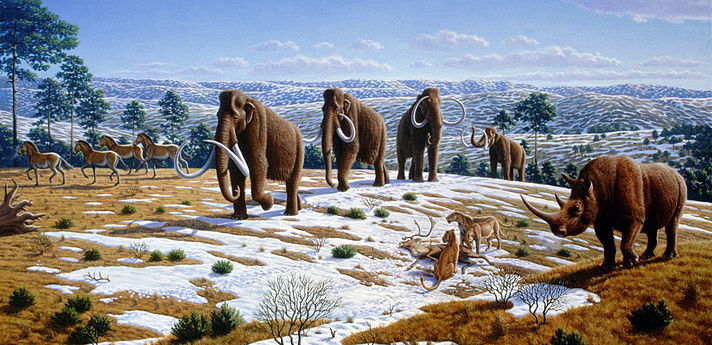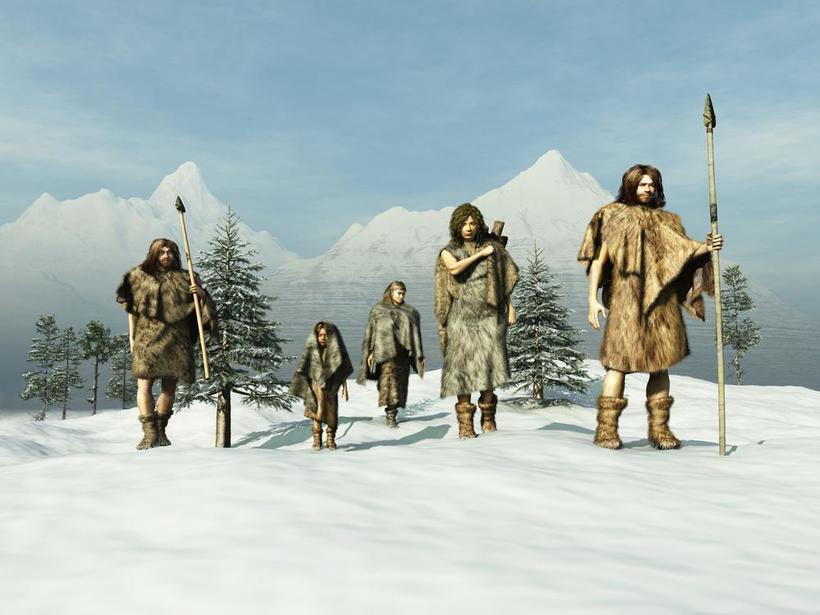The Pleistocene Epoch began about 2.6 million years ago and ended 11,700 years ago. At the end of this era, the last ice age to date took place, when glaciers covered vast areas of the Earth's continents. There have been at least five documented major ice ages since the Earth began forming 4.6 billion years ago. The Pleistocene is the first era in which Homo sapiens evolved: by the end of the era, people settled almost all over the planet. What was the last ice age?
Ice rink the size of the world
It was during the Pleistocene period that the continents settled down on Earth in the way we are used to. At one point during the Ice Age, sheets of ice covered all of Antarctica, most of Europe, North and South America, and small areas of Asia. In North America, they extended across Greenland and Canada and parts of the northern United States. Remains of glaciers from this period can still be seen in parts of the world, including Greenland and Antarctica. But the glaciers didn't just "stand still". Scientists note about 20 cycles, when glaciers advanced and retreated, when they melted and grew again.
In general, the climate then was much colder and drier than today. Because most of the water on the Earth's surface was frozen, there was little rainfall—about half what it is today. During peak periods, when most of the water was frozen, global average temperatures were 5 to 10°C below today's temperature norms. However, winter and summer still succeeded each other. True, in those summer money you would not have been able to sunbathe.
Life during the Ice Age
While Homo sapiens, in the dire situation of perpetual cold temperatures, began to develop a brain to survive, many vertebrates, especially large mammals, also courageously endured the harsh climatic conditions of this period. In addition to the well-known woolly mammoths, saber-toothed cats, giant ground sloths and mastodons roamed the Earth during this period. Although many vertebrates died out during this period, during those years, mammals lived on Earth that can still be found today: including monkeys, cattle, deer, rabbits, kangaroos, bears, and members of the canine and feline families.

Dinosaurs, apart from a few early birds, did not exist during the Ice Age: they died out at the end of the Cretaceous period, more than 60 million years before the start of the Pleistocene epoch. But the birds themselves at that time felt good, including relatives of ducks, geese, hawks and eagles. The birds had to compete with mammals and other creatures for limited supplies of food and water, since much of it was frozen. Also during the Pleistocene lived crocodiles, lizards, turtles, pythons and other reptiles.
The vegetation was worse: in many areas it was difficult to find dense forests. More common were single conifers such as pines, cypresses and yews, as well as some broad-leaved trees such as beeches and oaks.
mass extinction
Unfortunately, about 13,000 years ago, more than three-quarters of the large animals of the Ice Age, including woolly mammoths, mastodons, saber-toothed tigers, and giant bears, died out. Scientists have been arguing for many years about the reasons for their disappearance. There are two main hypotheses: human ingenuity and climate change, but neither can explain the extinction on a planetary scale.

Some researchers believe that here, as with dinosaurs, there was some extraterrestrial interference: recent research suggests that an extraterrestrial object, possibly a comet about 3-4 kilometers wide, could explode over southern Canada, almost destroying the ancient culture of the Stone Age, and also megafauna like mammoths and mastodons.
Sourced from Livescience.com
